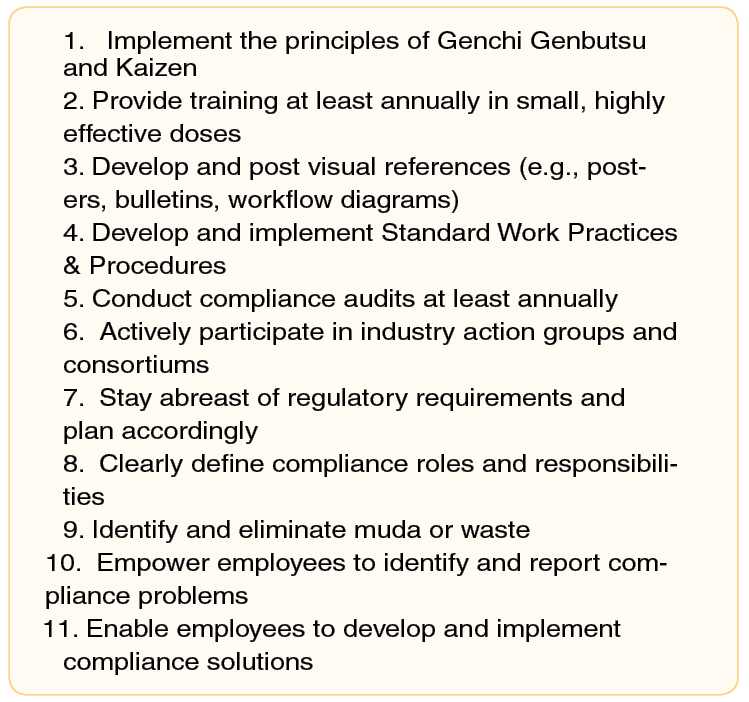Written on: April 29, 2013 by SprayTM
I recently completed a dangerous goods compliance review at a client’s warehouse. On the first day, I reviewed their permits and licenses; examined several packages for compliance with domestic and international regulatory requirements; interviewed several employees, supervisors and managers about their compliance programs; and reviewed their training records in detail. I spent the better part of the next day just observing various processes— receiving, packing, shipping, loading and unloading. At the end of the two days, I generated a brief report and promised to follow-up with a more detailed report with observations, findings and photos, as well as my opinions and recommendations.
Most of the “non-compliance” findings were rather innocent mistakes, such as forgetting to include a packing group on a dangerous goods declaration, partially obscuring the proper shipping name or identification number on a package, or failing to train a hazmat employee in all four required areas: General Awareness, General Safety, Security Awareness and Function-Specific. Most of the errors I observed could have been easily corrected or, indeed, prevented.
The Common Denominator
I thought to myself, “How is it that a company as well run and organized as this can have so many little errors that could result in such significant civil penalties?”
The management seemed to be committed to compliance, the supervisors and employees seemed to be somewhat knowledgeable of the regulatory requirements and they hadn’t had any violations in the past. So, I started comparing them to one of my other clients who has had exceptional compliance record for more than 15 years.
The answer is training and standardization! I went back to the training records and realized that, although they were technically current with the U.S. Dept. of transportation’s (DOT) Hazardous Materials Regulations with respect to training, the training was conducted more than two years prior.
So I started digging deeper. I checked the previous training records and found that they had trained their employees three years prior to that, as required, and again, three years prior to that. However, I also noticed that there were fewer and fewer of the same people each time. Clearly a number of their trained hazmat employees had moved on or switched jobs. There didn’t seem to be a core group of highly qualified persons for more than two training cycles.
This is where the current client differed from my “exceptional” client. My benchmark client conducts training annually and has a fewer number of hazmat employees that have been trained, trained and trained again. They keep current with the regulations and modify their function-specific training annually to reflect current requirements and industry trends. They take training in small, highly potent doses.
Industry Best Management Practices
The benchmark client also devotes a lot of time to the development of standard operating procedures, posting visual controls and references, and practicing the principles of “Genchi Genbutsu” and “Kaizen.”
Genchi Genbutsu literally means “go out and see,” and is a key principle of the highly successful Toyota Production System (TPS). Genchi Genbutsu suggests that in order to truly understand a situation, management needs to go to the site, or gemba, where the work is done and see for themselves.
Kaizen, which in Japanese means “continuous improvement,” is a process that is practiced daily, wherein small incremental improvements are made after careful planning, close observation, and evaluation after the improvement has been put in place. Kaizen teaches people to perform experiments on their work using the scientific method, implement and test the improvements, and learn how to spot and eliminate muda or waste.
Useful Tips
At right are some useful tips that my benchmark client can teach any company that is
 interested in developing a highly effective compliance program.
interested in developing a highly effective compliance program.
By implementing these and other industry best management practices, providing training more frequently and standardizing your work practices, your company should be able to develop and maintain a strong compliance program, eliminate wasteful practices and prevent potentially costly errors. SPRAY